Allyson Newburg's Blog
November 11, 2020
Virtual Remembrance Day
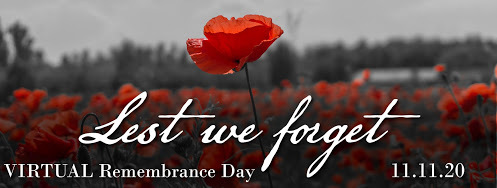
The Canadian Warplane Heritage Museum will be holding a virtual Remembrance Day today, from 10:30 to 11:30 am EST.
Watch live on CHCH-TV or streaming at chch.com/live
Vera, the museum's Lancaster will make a flypast, weather permitting. View Vera's route on YouTube.
Published on November 11, 2020 04:00
October 19, 2020
Remembering Martin Carnell
I am sad to report Martin Carnell, nephew of Harris Crew engineer Kenneth Smith, passed away on October 6th. Martin was an enthusiastic volunteer for Help For Heroes, a UK-based charity providing support to wounded veterans and their families. Donations may be made in his honour by visiting https://www.justgiving.com/fundraising/inmemorymartincarnell.
Published on October 19, 2020 05:57
July 1, 2020
'Vera' and 'Thumper' Return to the Skies
Yesterday and today marked the return to the air of the two remaining airworthy Lancasters.
PA474 'Thumper' took off from RAF Coningsby, roaring about the skies of Lincolnshire, England yesterday. View the video posted by Lincolnshire Live.
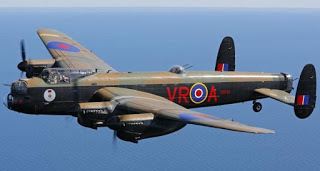 FM213 'Vera'
FM213 'Vera'
Source: The Canadian Warplane Heritage MuseumFM213 'Vera' from the Canadian Warplane Heritage Museum returned to the air for Canada Day today. In addition to commemorating the 75th Anniversary of VE Day, the flight was dedicated to the memory of Captain Jenn Casey and the Snowbirds 50th Anniversary.
Happy Canada Day everyone!
PA474 'Thumper' took off from RAF Coningsby, roaring about the skies of Lincolnshire, England yesterday. View the video posted by Lincolnshire Live.
 FM213 'Vera'
FM213 'Vera'Source: The Canadian Warplane Heritage MuseumFM213 'Vera' from the Canadian Warplane Heritage Museum returned to the air for Canada Day today. In addition to commemorating the 75th Anniversary of VE Day, the flight was dedicated to the memory of Captain Jenn Casey and the Snowbirds 50th Anniversary.
Happy Canada Day everyone!
Published on July 01, 2020 15:34
May 30, 2020
Allied Aircrews Paid a High Cost
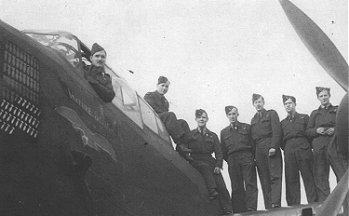
For the Canadian survivors of the Harris Crew, little was shared of their experiences in the war with their families, if at all, for reasons personal to each of them. Openly speaking about their experiences would be all the more difficult due to the historic hostility towards those who served in RAF’s Bomber Command.
The Allied bomber offensive against Germany will be forever debated, but one fact cannot be disputed: The cost of the bomber offensive to Allied aircrews was terribly high.
In all, over 55,000 men and woman died serving with RAF’s Bomber Command during World War II. Nearly a fifth came from Royal Canadian Air Force.
As mentioned in the May 16th blog entry Winding Down the Blog, this will be my last entry for this project, at least for now. I will continue to pass along news and stories related to the crew, Bomber Command and 550 Squadron, but rather than sending out updates daily, they will arrive periodically. If you would like to learn more about the Harris Crew, be sure to read the book The Harris Crew. You can also learn more about the crew and 550 Squadron on the Harris Crew Website or the Harris Crew Blog.
If you have been following this blog, you will know about the mystery related to the fate of Robert Harris and it is time for me to continue my research into this puzzling riddle.
Thank you for following along and I'll be in touch!
Published on May 30, 2020 07:00
May 28, 2020
Vulture Strikes!
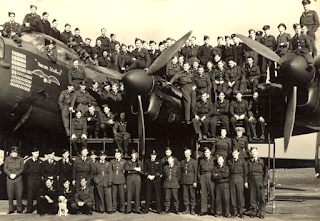 On March 7, 1945, 550 Squadron would also lose the crew of 'Vulture Strikes!" After celebrating the 100th successful mission for "V" on March 6, the crew was shot down the following evening on the raid to Dessau by a German JU88 fighter.
On March 7, 1945, 550 Squadron would also lose the crew of 'Vulture Strikes!" After celebrating the 100th successful mission for "V" on March 6, the crew was shot down the following evening on the raid to Dessau by a German JU88 fighter.Flight Engineer S. J. Webb, Wireless Operator F. M. Main, Rear Gunner Maurice Smith and Mid-Upper Air Gunner Stanley Pelham survived and became POWs. Smith managed to escape capture and returned to England on April 11, 1945.
Evidence suggests Pilot Cyril Jones, Navigator John Buckmaster and Bomb Aimer Leslie Wallace Harvey (all three Canadian) were able to parachute to the ground but were subsequently murdered by the Gestapo or SS. Despite the likelihood of a war crime, the matter was never pursued by the RCAF due to administrative challenges. At the close of the war, Magdeburg, the area in which Buckmaster and Harvey were killed, was now under Russian control.
Harvey is buried at the Nederweert British Cemetery in the Netherlands. The remains of Jones and Buckmaster were never found.
TSN aired a program in 2012 entitled “Engraved on a Nation: The Photograph” featuring seven members of the 1942 Grey Cup winning team, the RCAF Hurricanes, who did not return from WW2 service. John Buckmaster was one of these young men.
 This photograph was the subject of TSN's program "Engraved on a Nation: The Photograph"
This photograph was the subject of TSN's program "Engraved on a Nation: The Photograph"John Buckmaster is the third from left in the back row (next to the young man holding the Coke bottle in the air)
Published on May 28, 2020 07:00
May 27, 2020
The Tail Fin
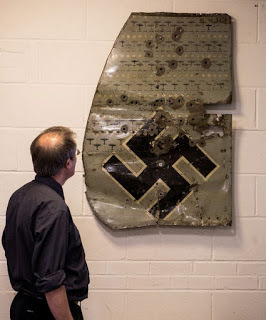 The port tail fin of Schnaufer’s favourite aircraft,
The port tail fin of Schnaufer’s favourite aircraft, G9+EF, sold at auction to a private collector in 2015.On the evening of March 7, 1945, Harris and his crew encountered a formidable opponent in German Luftwaffe night-fighter pilot Major Heinz-Wolfgang Schnaufer. Schnaufer is considered Germany’s ‘top-scoring’ night-fighter pilot and was credited with 121 heavy bomber night victories in a Messerschmitt Bf 110B.
Schnaufer commemorated each ‘victory’ by having a bomber icon painted onto the tailfins of his favourite aircraft. He flew at least two Messerschmitts and had the markings applied to each:
3C+BA: Schnaufer flew this particular aircraft but never claimed any victories aboard it. The port fin is on display at the Imperial War Museum in London, England. The starboard fin can be viewed at the Australian War Museum in Canberra, Australia.
G9+EF: Schnaufer’s favourite aircraft and one in which he shot down 34 British bombers, including that of the Harris crew. This aircraft was shot down March 30, 1945 while being flown by another crew. The remains of the aircraft were taken away by a scrap dealer, then picked up by a chimney sweep, reportedly to be used as a patch on a roof. The port fin was purchased by a German military-air historian who then put the fin up for auction in 2015. The fin was sold to a private collector for £90,000. The location of the starboard tail fin of this aircraft is unknown.
In each case, the Harris crew’s aircraft is symbolized by the 121st and last icon on each fin. It was Schnaufer’s last victory of the war and he was assigned to other duties immediately afterwards.
Published on May 27, 2020 07:00
May 26, 2020
Flak or Fighter
Gordon Nicol’s post-POW report mentioned the crew was shot down by flak (ground fire) and one of Doug Hick’s narratives indicate there was some question as to whether they were shot down by a German fighter pilot or flak. However, several sources indicate it most likely they were shot down by Luftwaffe night fighter pilot Heinz-Wolfgang Schnaufer, using a ‘Schräge Musik’ upward-firing cannon.
 Diagram of an upward firing canon.
Diagram of an upward firing canon.Image source: forum.warthunder.comSchräge Musik, roughly translated as oblique music, were fixed, upward-angled cannons developed by the Luftwaffe to be carried behind the cockpit on night fighters. An attack by a Schräge Musik-equipped fighter was typically a surprise to the bomber crew, as the tactic was to approach from the rear and up to the blind spot beneath the bomber, then open up with their upward-firing cannons. Crews might only realize a fighter was close by when they came under fire and crews often attributed sudden fire from below to ground fire.A book published in 2011 by German researchers Jörg Helbig and Jörg Andree presented evidence that ME428 was the 121st, and last, aircraft downed by Luftwaffe night fighter pilot Heinz-Wolfgang Schnaufer. The book is titled: "...und brennend abgestürzt..."(...and goes down in flames...). Their research indicates that ME428 was downed at 21.56 hrs combat time next to a village named Colbitz 23 km N of Magdeburg en route to the target of Dessau. An eyewitness was found who was able to point out the location of the crashed aircraft.
The book “Schnaufer Ace of Diamonds” by Peter Hinchcliffe also notes Schnaufer’s last downed plane of the war was at 21.56 hrs which is consistent with Allied records of the downing of the crew’s aircraft ME428.
Published on May 26, 2020 07:00
May 25, 2020
After the War - William Towle
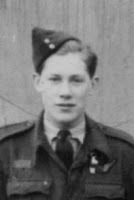 After serving with the Harris Crew on their February 14, 1945 raid to Chemnitz, William Towle joined Flying Officer H. A. Findlay’s crew and went on to complete twenty more successful operations including participation in Operation Manna.
After serving with the Harris Crew on their February 14, 1945 raid to Chemnitz, William Towle joined Flying Officer H. A. Findlay’s crew and went on to complete twenty more successful operations including participation in Operation Manna.
Published on May 25, 2020 07:00
May 24, 2020
After the War - Douglas Hicks
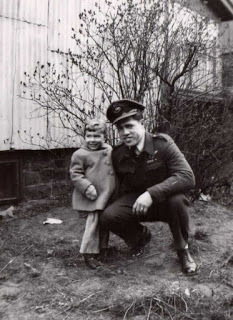 Hicks, with niece Shirley Newburg, on
Hicks, with niece Shirley Newburg, on his return home September 10, 1945.
Source: The Hicks familyAt the end of his treatment in the Canadian Wing at the Queen Victoria Hospital, Douglas Hicks traveled to Bournemouth to await transport back to Canada. He would be repatriated back to Canada, along with over 4,000 other troops, aboard Canadian Pacific steamship ‘The Empress of Scotland,’ coincidentally the same ship he sailed on to the UK fourteen months prior. The ship departed Liverpool on September 4, 1945, arriving five days later in Quebec City. Trains were ready dockside to take the troops onwards to their destinations in Canada. Doug arrived home in Toronto on September 10th.
Hicks was awarded a commission in the Royal Canadian Air Force and discharged at the age of 19 with the rank of Flying Officer, upon which he went to work at Air Canada.
He lived with his mother and sister Anne (and her growing, young family) in Toronto until marrying his wife Madelaine, a flight attendant for Air Canada. Hicks ultimately became the Airport Manager for both Kennedy and LaGuardia Airports, retiring after 42 years. He and Madeleine were married for over 54 years, until her passing in 2011 and they had five children: Katherine, Candace, Brian and twins Janet and John.
Hicks continued to be an active member of the Ex Air Gunners Association, the 550 Squadron Association and the Guinea Pig Club. Hicks passed away August 16, 2014 in Las Cruces, New Mexico, at the age of 89.
Published on May 24, 2020 07:00
May 23, 2020
After the War - Albert Colin
After standing in as the mid-upper air gunner for the Harris Crew on their first operation to Dresden, Albert Colin flew with two other crews and went on to complete nineteen more operations, participating in Operation Manna, air dropping food to the Dutch from April 29, to May 8, 1945 and Operation Exodus, returning POWs to England from Brussels in May 1945.
Published on May 23, 2020 07:00



